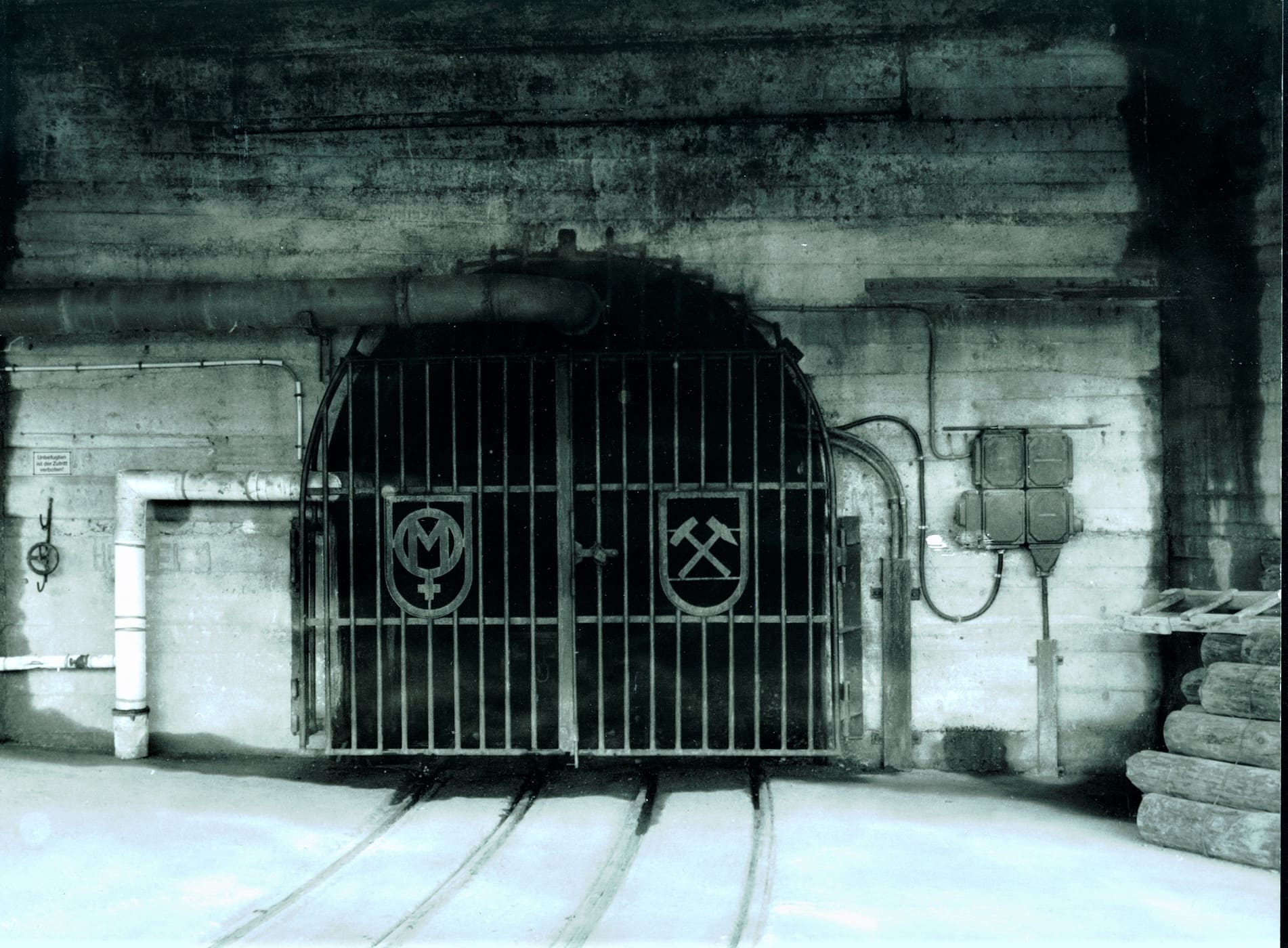Westernmost Mine Entrance - Ellmau Tunnel
In the early 1960s, during a ski tour on the Mitterriedel, the chief surveyor Hans Klausner had the idea to develop a new haulage tunnel in the west of the copper mine! The Ellmau Tunnel was then started in July 1966 at an altitude of 1,280 meters. The tunnel extended 600 meters into the mountain to reach the Ellmau Shaft, which led 400 meters deep, before connecting with the 7th level approximately 1,000 meters to the east. State-of-the-art technology was used as the future of copper mining was seen in expanding to the west, where millions of tons of copper ore still lay deep underground.
Operations began in 1972, and the so-called Blindschacht West was completed down to a depth of 423 meters
above sea level - 11th level. At the 7th level of the Ellmai Shaft, approximately 650 meters below ground, and at the 11th level of the Blindschacht West (the deepest point of the mine), one found oneself around 1,200 meters below ground. There, temperatures reached around 25-30 degrees Celsius. Unfortunately the copper price on the world market did not develop as desired, leading to the definitive end of copper mining in Mühlbach am Hochkönig in November 1976.
Thus, the many kilometers of tunnels lie dormant in the depths, perhaps to be made available to
humans again in some form in the future.
Kids
Herbal treasure in the forest
There are many herbal treasures to discover in the forest! You probably already know one of them: the stinging nettle. It has green, jagged leaves that look really wild. But be careful! If you touch the leaves, it can sting and burn. The plant does this to protect itself from animals that want to nibble on it. But don't worry, if you handle them carefully and with gloves, nothing can happen.
But stinging nettles aren't just there for you to watch out for - they're also really useful! You can make a delicious tea from it, which is good for your health. And did you know that you can even eat stinging nettles? You can use it in a casserole, in soup or even in dumplings. This turns the prickly plant into a real treat!
So, next time you're in the forest, keep your eyes open - who knows what other herbal treasures you'll find!
Herbal treasure in the forest
There are many herbal treasures to discover in the forest, and one of the best-known wild herbs is the stinging nettle. You may have seen it before: It has green, jagged leaves and burns unpleasantly on the skin if you touch it without protection. This is due to the tiny hairs on its leaves and stems, which cause a burning sensation on contact. This is how the plant protects itself from animals that want to eat it. But did you know that stinging nettle is much more than just a "burning" plant? It is actually very useful! Its leaves can be made into tea, which is good for your health. Nettles also have a firm place in the kitchen. Although it has a stinging effect, it is completely harmless when cooked and can be used in soups, casseroles or even dumplings. It tastes a bit like spinach and is full of vitamins and minerals.
Next time you're in the forest, take a closer look. You'll be amazed at the treasures nature has in store for you - and stinging nettles are just one of them!
Superfood from the forest
There are lots of exciting herbal treasures to discover in the forest, and stinging nettles are one of the best-known wild herbs. You've probably seen them before: Its green, jagged leaves immediately catch your eye. But be careful when you touch them! The stinging nettle has tiny hairs on its leaves and stems that leave a burning sensation on the skin on contact. This is their defence mechanism to protect themselves from predators.
But many people don't realise this: The stinging nettle is much more than just a "stinging" plant. It is extremely useful and even a real superfood! Its leaves can be used to make healthy tea, which is good for the metabolism, for example. In the kitchen, it is often used as a substitute for spinach. When cooked, it completely loses its burning effect and can be used in soups, casseroles or even dumplings. It contains many vitamins and minerals that are good for your body.
So, the next time you're out and about in the forest, it's worth taking a closer look at nature. The stinging nettle is just one of many fascinating plants waiting for you!


